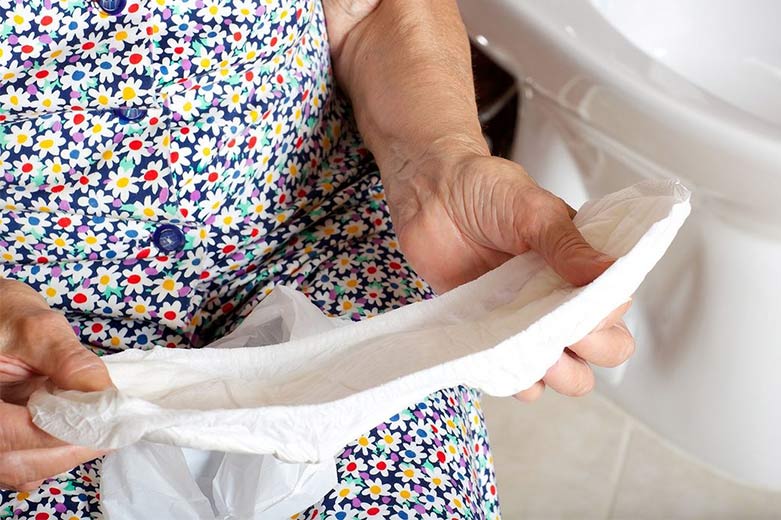Millions of women live with a leaky bladder, including nearly half of women over 50. Only about 30% of those women talk to their doctors about it. Many people live with the leaks because they are embarrassed or believe it’s a normal part of aging. It’s not.
Embarrassment and concern about leaks or odor can affect a woman’s social life, activities, and relationships. Many women give up activities they enjoy and become socially isolated because of their concerns.
Leaking urine (incontinence) also creates health risks. Leaked urine can cause skin irritation and lead to urinary tract infections.
Urinary incontinence may be common, but it’s not a typical sign of aging. Seeking treatment can improve your lifestyle, health, and self-confidence.
Types of incontinence
Two types of incontinence are most common in women, and some women have them both:
- Urge incontinence — If you have a sudden and urgent need to urinate that keeps you from reaching the bathroom in time, you have urge incontinence. You may also feel like you have to go all the time, or like you can’t control your urge to urinate. Urge incontinence can be caused by an overactive bladder, diet, fluid intake, pelvic floor disorders, or neurological reasons.
- Stress incontinence — Those unexpected leaks when you cough, laugh, or exercise are stress incontinence. Any sudden movement or pressure on the abdomen can force urine to leak with this type of incontinence. It is usually a result of weakened pelvic floor muscles. Women may experience stress incontinence younger than urge incontinence, especially after pregnancy and childbirth. Other causes are pelvic surgery and medical conditions that cause a chronic cough.
Why is incontinence more common in women?
Women suffer from urinary incontinence more often than men because of the effects of pregnancy, childbirth, and menopause. Pregnancy and childbirth push down on the bladder, straining and weakening the pelvic muscles. In addition, about one in eight women undergo a hysterectomy, which often results in a repositioning of the pelvic organs. Multiple pregnancies, large babies, hysterectomy, weight gain, constipation, smoking, and pelvic trauma can all affect how the bladder functions.
What to do if you have incontinence
Speaking to a doctor is the next step. You already know if you have leaking, but your doctor will want to know more before giving you a diagnosis. Before beginning any treatment, it’s important to rule out other medical causes or an infection.
At your appointment, you can expect to talk about things like your health history, symptoms, and your drinking and voiding habits. Your doctor may also do a physical exam, a cough stress test, or bladder function tests. Other tests that help diagnose bladder issues are urinalysis, ultrasound, a bladder stress test, cystoscopy, or urodynamics.
Your doctor may also suggest you keep a diary of voiding and leakage or give you exercises to strengthen your pelvic floor muscles.
Treating incontinence
You and your doctor will determine the best treatment for you based on your exam, the severity of your symptoms, and your lifestyle.
Stress incontinence
- Pelvic floor exercises — Kegel exercises can strengthen your pelvic floor muscles and urinary sphincter, which work together to hold in your urine. When done correctly, Kegel exercises can improve incontinence in as soon as three to six weeks.
- Periurethral injections — Injections of bulking substances, like collagen, around the urethra improve its ability to close and hold urine.
- Surgery — A urethral sling is like a hammock surgically placed under the urethra to support it and help it close under pressure. It is the most common surgical procedure for stress incontinence. Colposuspension, also known as the Burch procedure, is another surgical option that involves stitching the bladder in place.
- Percutaneous tibial nerve stimulation (PTNS) — PTNS is a non-surgical option that applies electrical stimulation to a particular nerve to help change bladder activity. It’s a kind of electroacupuncture given through a series of weekly treatments.
Urge incontinence
- Behavioral therapy — Making certain lifestyle changes can help minimize urge incontinence. For example, bladder training (urinating on a schedule) can decrease leaks. Changing the timing and amount of what you drink may also help. Other changes that might decrease incontinence are quitting smoking, losing weight, treating constipation, and avoiding caffeine, alcohol, and spicy foods.
- Medications — Certain medications (anticholinergics or beta adrenergics) relax the bladder or prevent it from contracting when it shouldn’t. Medications are generally the first type of treatment recommended.
- Neuromodulation — A procedure called percutaneous tibial nerve stimulation (PTNS) is a non-surgical option that applies electrical stimulation to a particular nerve to help change bladder activity. It’s a kind of electroacupuncture given through a series of weekly treatments in the office. Another option is an implantable nerve stimulator. This is a surgical option.
- Botox injections — Botox helps prevent unwanted bladder contractions. It’s a good option for those who have not responded to other treatments; however, a side effect may be difficulty urinating.
Remember, incontinence is not a normal part of aging and there are treatments available.
If you’re ready to take back control, schedule an appointment today.

